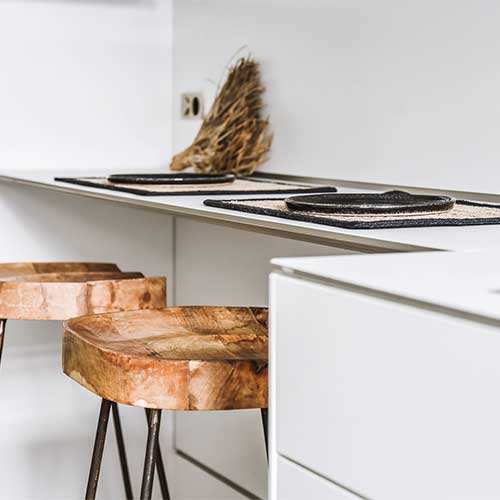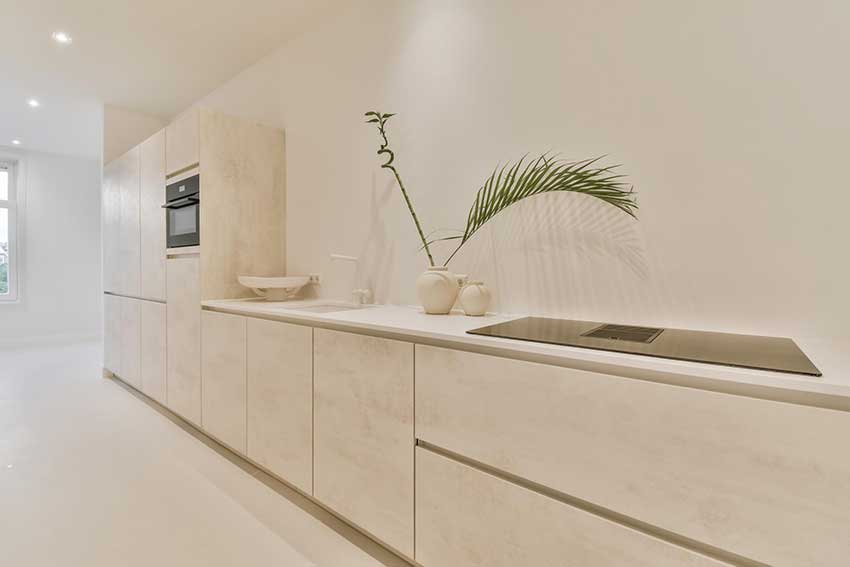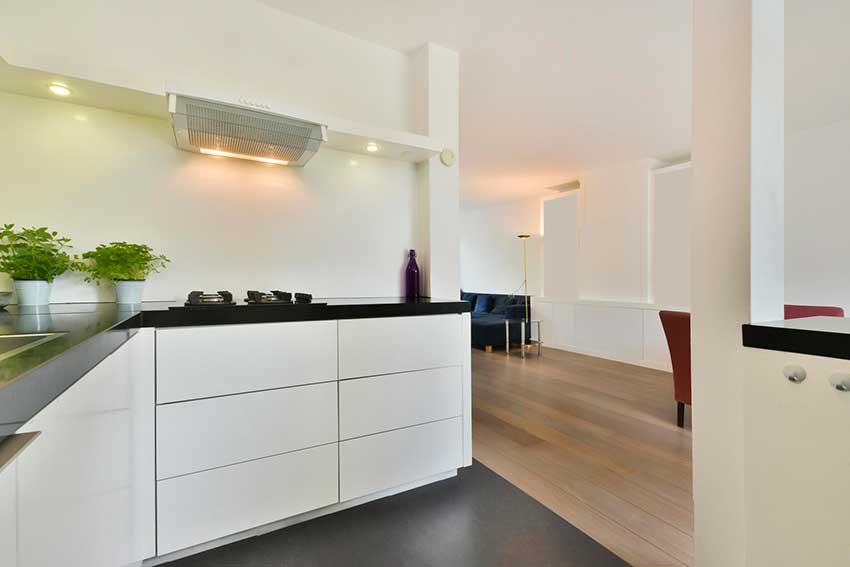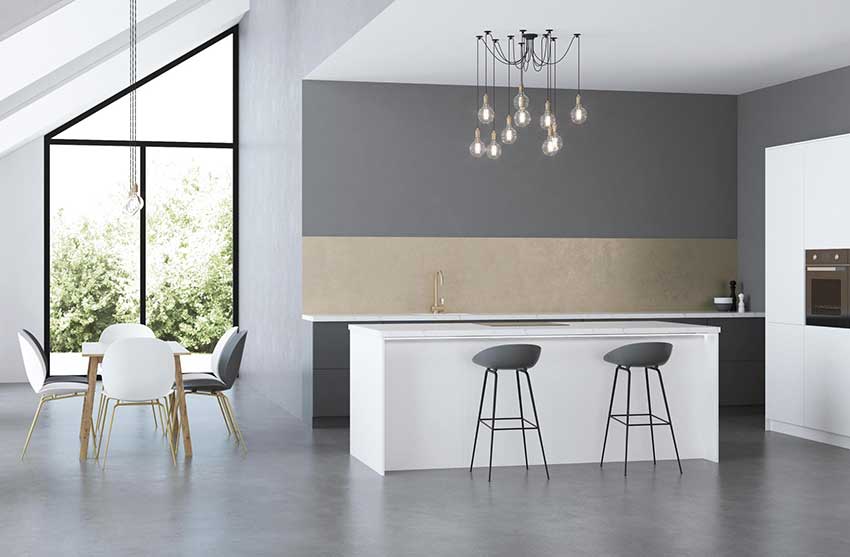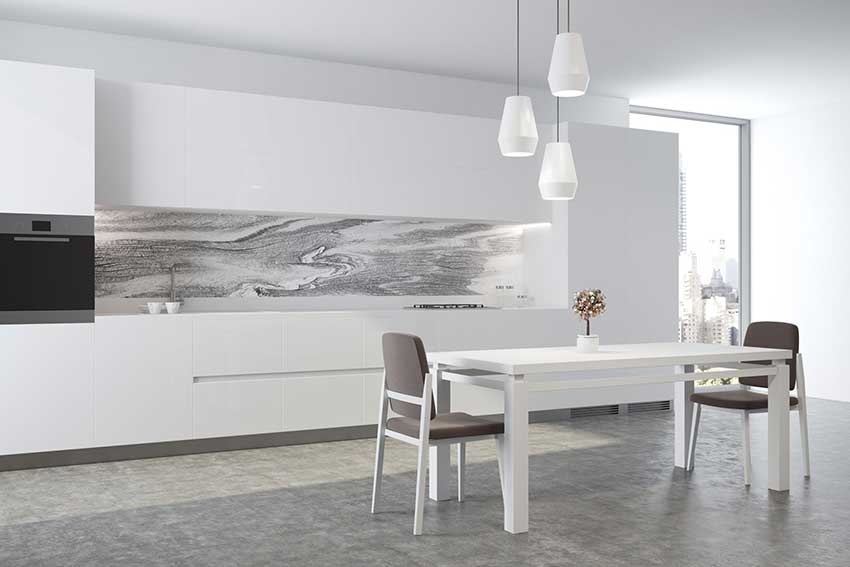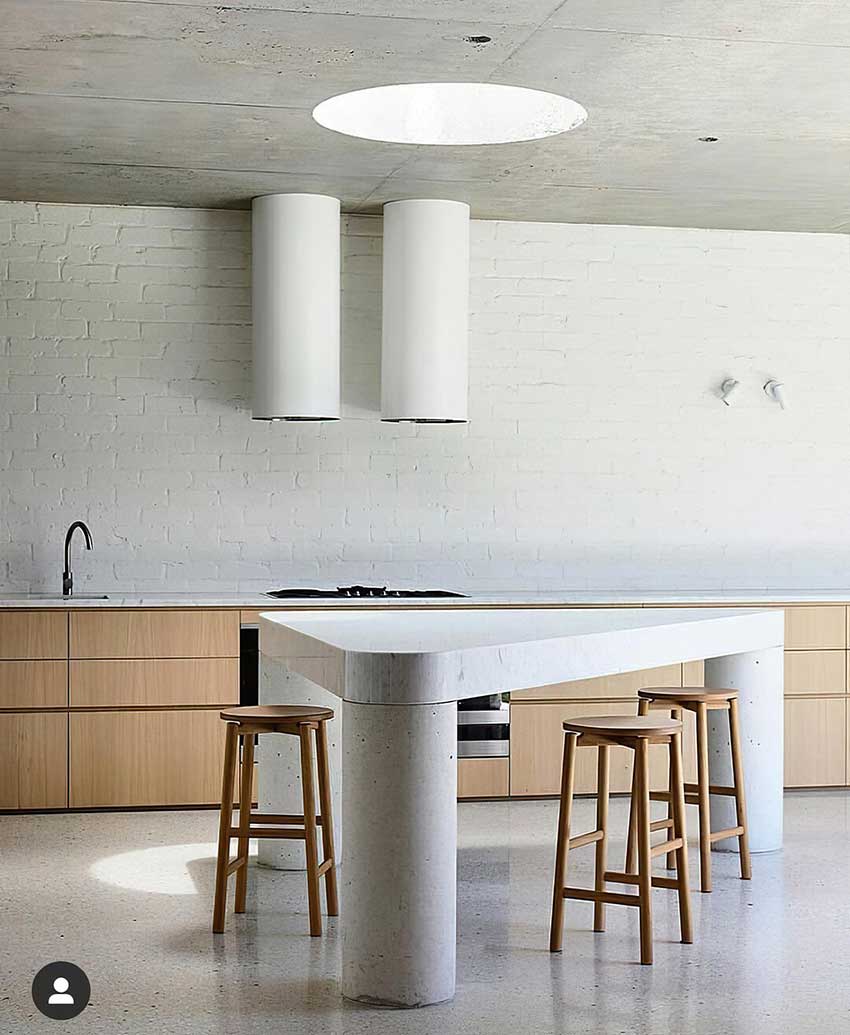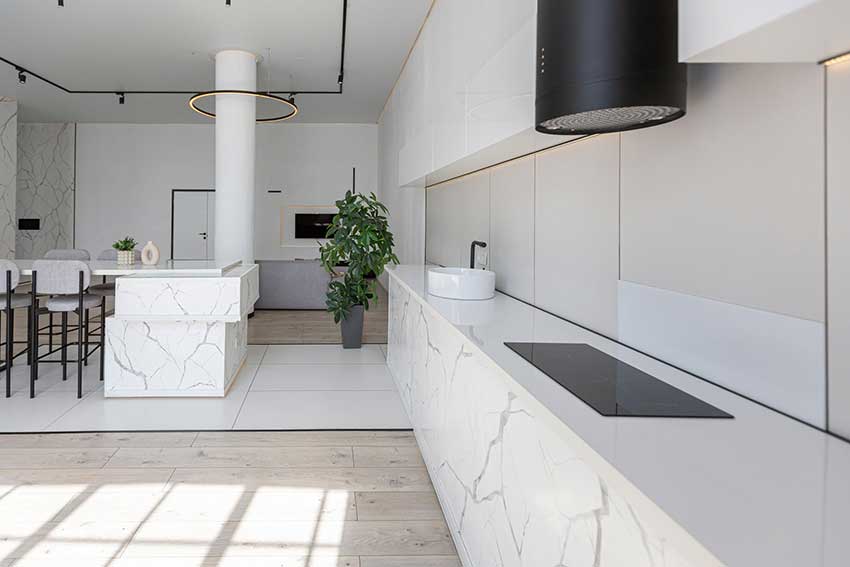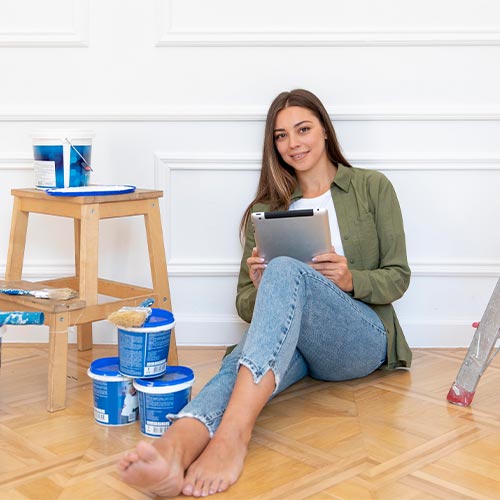Minimalist Kitchen Design: The Ultimate Guide to a Sleek and Functional Space
In today’s fast-paced world, many homeowners are embracing simplicity and functionality, leading to the rise of minimalist kitchen design. This design philosophy centers on creating clean, uncluttered spaces that combine aesthetics with practicality. But what exactly defines a minimalist kitchen? And why is it gaining so much popularity? Let’s explore this transformative approach to kitchen design.
Core Principles of Minimalist Kitchen Design
Minimalism isn’t just about having fewer items—it’s about choosing the right elements. Minimalist kitchen design focuses on these key principles:
- Simplicity and Functionality: Each element serves a purpose. Cabinets, countertops, and appliances are chosen with both style and usability in mind.
- Clean Lines and Uncluttered Spaces: Sharp, straight lines dominate the design, giving a crisp and polished look.
This approach not only reduces visual clutter but also brings a sense of calm and order to the kitchen, making it a pleasure to use daily.
more:view interior decoration equipment
Benefits of a Minimalist Kitchen
A minimalist kitchen isn’t just about aesthetics; it’s also a practical choice. Here’s why many homeowners are opting for this style:
- Easy Maintenance: With fewer items and smoother surfaces, cleaning becomes a breeze.
- Enhanced Functionality: A well-organized space means everything you need is within reach, boosting productivity while cooking.
- Timeless Aesthetic: Unlike trendy designs, minimalist kitchen design remains stylish through the years, making it a wise investment.
Whether you have a large or small kitchen, minimalism helps maximize space and create an environment that feels open and inviting.
Key Elements of Minimalist Kitchen Design
Creating the perfect minimalist kitchen involves paying attention to key elements:
- Neutral Color Palettes: Shades of white, gray, beige, and black dominate, providing a calm backdrop.
- Minimalist Cabinetry: Handleless cabinets and smooth finishes keep the look cohesive.
- Open Shelving: Instead of heavy cabinetry, open shelves can make the space feel more airy and modern.
By blending these elements seamlessly, your kitchen will exude simplicity while remaining highly functional.
Choosing the Right Materials
The materials you select can make or break your minimalist vision. Opt for high-quality, natural materials like:
- Wood: Adds warmth without overwhelming the design.
- Marble or Quartz: Perfect for countertops, providing a sleek yet durable surface.
- Steel and Glass: Ideal for appliances and accents, enhancing the clean, modern look.
For a truly minimalist kitchen, stick to finishes that reflect light and avoid patterns or overly textured materials.
Maximizing Storage in a Minimalist Kitchen
A minimalist kitchen is only as good as its storage solutions. Clever organization ensures the space stays uncluttered:
- Hidden Storage: Use pull-out drawers, hidden compartments, and built-in cabinets to keep items out of sight.
- Decluttering: Regularly review your kitchen items and keep only what you truly use. Remember, minimalism thrives on the “less is more” philosophy.
Lighting in a Minimalist Kitchen
Lighting plays a crucial role in minimalist kitchen design. Here’s how to get it right:
- Natural Light: Large windows or skylights bring in natural light, creating an open and airy atmosphere.
- Minimalist Fixtures: Pendant lights or recessed lighting with simple designs enhance the sleek aesthetic without dominating the space.
Proper lighting not only highlights the clean lines but also makes the space more functional for cooking and dining.
Appliances for Minimalist Kitchens
Incorporating appliances into a minimalist kitchen requires a strategic approach. The goal is to ensure they blend seamlessly into the design while maintaining functionality.
- Sleek and Compact Designs: Modern appliances with clean lines, smooth finishes, and minimalist details are ideal. Stainless steel, matte black, or integrated panel options work best.
- Integrating Technology for Efficiency: Smart appliances, like refrigerators with built-in screens or induction cooktops with touch controls, enhance usability without adding clutter. Many brands now offer “hidden” appliances that blend into cabinetry for a streamlined look.
Choosing appliances that prioritize form and function ensures your minimalist kitchen stays true to its purpose.
Decorating a Minimalist Kitchen
While the idea of decoration might seem counterintuitive in minimalism, small, intentional touches can add personality:
- Using Plants and Natural Elements: A potted herb or a vase of fresh flowers adds life to the space without overwhelming it.
- Limiting Decorative Items: Avoid overloading countertops or shelves. A single ceramic vase, a wooden chopping board, or a sculptural light fixture can serve as understated accents.
The key is to ensure every decorative element has a purpose, whether functional or aesthetic.
Common Mistakes to Avoid
Achieving a minimalist kitchen isn’t as simple as removing clutter—it requires careful planning. Here are common pitfalls to watch for:
- Overcrowding the Space: Adding too many elements, even in a minimalist style, can defeat the purpose. Stick to the essentials.
- Ignoring Functionality for Aesthetics: A minimalist kitchen should work well. Don’t sacrifice practicality for the sake of appearance.
- Using Too Many Colors: Keep the palette neutral and cohesive. Multiple colors or patterns can disrupt the serene vibe.
Avoiding these mistakes ensures that your minimalist kitchen stays functional and stylish.
Inspiration from Minimalist Kitchen Trends
If you’re looking for design ideas, draw inspiration from these popular trends:
- Scandinavian Designs: Known for their simplicity and elegance, Scandinavian kitchens often feature light wood, white cabinetry, and natural textures.
- Japanese Minimalist Influences: Focused on Zen principles, Japanese designs emphasize balance and harmony, often incorporating natural materials like bamboo and stone.
These styles offer timeless approaches to minimalist kitchen design, blending aesthetics and practicality.
Budget-Friendly Minimalist Kitchen Design Tips
You don’t need a massive budget to create a minimalist kitchen. Here are some cost-effective strategies:
- Repurposing Existing Furniture: Update cabinets with a fresh coat of paint or replace handles with sleeker designs.
- Affordable Material Options: Laminate countertops and faux wood finishes can mimic high-end materials without the hefty price tag.
- DIY Projects: Simple upgrades like installing open shelving or refinishing old furniture can save costs.
With creativity and planning, you can achieve a minimalist look without breaking the bank.
Maintaining Your Minimalist Kitchen
The work doesn’t stop once your kitchen is designed. Maintenance is key to preserving the minimalist aesthetic:
- Daily Habits: Clean as you go, avoid leaving items on countertops, and ensure everything is returned to its designated space.
- Seasonal Deep Cleaning: Dedicate time every few months to declutter drawers and cabinets, discarding unused or expired items.
A consistent routine ensures your kitchen remains a stress-free and organized environment.
Minimalist Kitchen Design for Small Spaces
Living in an apartment or a home with limited kitchen space? Minimalism is the perfect solution for maximizing functionality:
- Maximizing Every Square Foot: Use vertical storage, foldable tables, and multi-purpose furniture to make the most of small areas.
- Compact Yet Functional Layouts: A galley or one-wall kitchen layout works well in tight spaces, keeping everything within reach.
A minimalist approach to small kitchens ensures they feel open, airy, and efficient, no matter the size.
Sustainability in Minimalist Kitchen Design
Minimalist kitchens naturally align with eco-conscious living, making them an excellent choice for homeowners looking to reduce their environmental footprint. By focusing on quality over quantity and intentional purchasing, you can create a kitchen that’s not only stylish and functional but also sustainable.
Eco-Friendly Materials: Opt for sustainably sourced wood, bamboo, recycled metal, or low-VOC finishes for cabinetry and surfaces. These choices minimize harmful emissions and reduce environmental impact.
Energy-Efficient Appliances: Choose appliances with high energy ratings to reduce power consumption. Induction cooktops, convection ovens, and Energy Star-rated refrigerators contribute to a greener kitchen while maintaining sleek design aesthetics.
Waste Reduction Strategies: Incorporate features like compost bins, built-in recycling drawers, and water-saving fixtures. Planning your kitchen with sustainability in mind encourages habits that minimize waste and conserve resources.
By integrating sustainable practices into your minimalist kitchen, you not only support the environment but also create a healthier home for your family—further enhancing the long-term value of your space.
Builpire: Transforming Your Space, One Design at a Time
Builpire is your trusted partner for interior decoration and kitchen design, offering a seamless experience from concept to completion. Specializing in personalized home and kitchen transformations, Builpire goes beyond design by acting as your dedicated contractor. We manage every detail, ensuring that your dream space comes to life with expertise and style. Our unique platform allows you to explore a curated selection of high-quality products essential for your interior project. As you browse, you can effortlessly add items to your personalized contract, guaranteeing that each element is tailored to fit your vision and budget. With Builpire, design meets functionality, delivering spaces that inspire and elevate your everyday living. Discover the possibilities with Builpire—where exceptional design becomes your reality .
For more ideas and guidance, follow us on Instagram.
Conclusion
Minimalism is more than just a design trend—it’s a lifestyle. Minimalist kitchen design offers a way to create spaces that are not only beautiful but also functional and stress-free. By focusing on clean lines, thoughtful storage, and high-quality materials, you can transform your kitchen into a sleek and serene sanctuary. Whether you’re starting from scratch or updating your existing kitchen, adopting a minimalist approach can make a world of difference.
FAQs
1. What are the main colors used in minimalist kitchen design?
Neutral colors like white, gray, beige, and black dominate minimalist kitchens. These shades create a calm and cohesive look, often accented with natural wood tones or metallic finishes.
2. How do I maximize storage in a minimalist kitchen?
Focus on hidden storage solutions such as pull-out drawers, under-cabinet organizers, and built-in compartments. Regularly declutter to keep only essential items, ensuring the space remains organized.
3. Can a minimalist kitchen include decorative elements?
Yes, but decoration should be intentional and limited. For example, a single plant, a ceramic vase, or a piece of functional art can add personality without overwhelming the space.
4. Is minimalist kitchen design suitable for small spaces?
Absolutely! Minimalist kitchens are perfect for small spaces because they emphasize efficiency and functionality. Features like vertical storage and compact layouts maximize utility without adding clutter.
5. What materials work best for minimalist kitchen countertops?
Marble, quartz, and concrete are excellent choices for minimalist countertops. They offer durability and sleek finishes that complement the clean aesthetic of the design.

